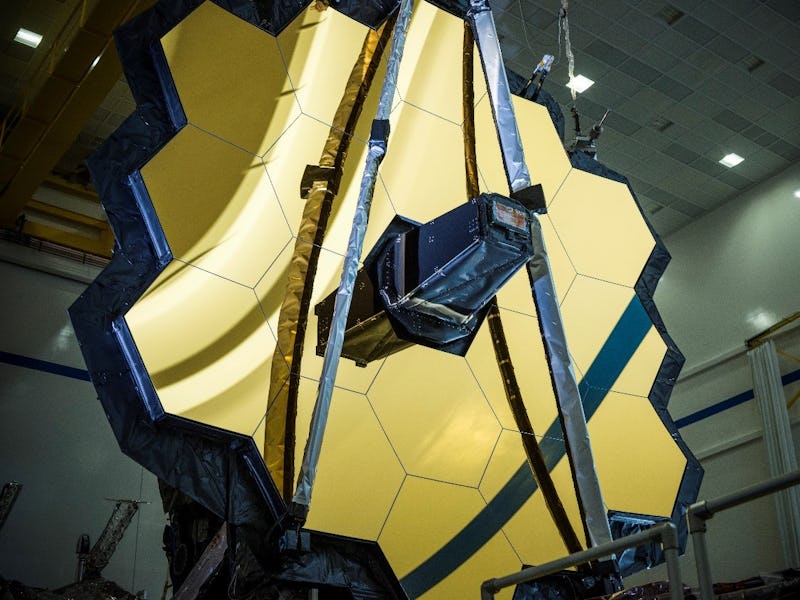Look: With 14 days till launch, the James Webb Telescope moves to a critical stage
Will it be a Christmas Eve miracle?

This is one heck of an advent calendar: After a half-dozen delays, a potentially-treacherous voyage down the Atlantic, and a little accident in French Guiana, it seems like the James Webb Space Telescope is maybe, finally, truly going to launch to space in 14 days time — at least, a new photo suggests that is the plan.
What’s new — A new photo posted this week by the European Space Agency doesn’t exactly show the James Webb Telescope itself — instead, it shows a box encasing the Webb as it heads toward a new building for the final stages of its assembly. The Webb appears to have made the trip in the dead of night.
The final assembly building is the place where the telescope will be placed atop an Ariane 5 rocket — the same rocket which will take it a million miles past Earth.
The 50,000-pound container in the picture was custom built for Webb. Next, the telescope will be unboxed and elevated to a high platform that will place it on the Ariane upper stage. In the next week, a special faring will be wrapped around the telescope after it and the Ariane 5 become one. Then, one day before launch, the rocket is slated to be rolled out to its rocket pad — and that should be it.
The Webb Telescope even survived this little car ride. What’s a little rocket ride?
Why it matters — This tantalizing image represents a critical moment for the mission as it finally nears fruition. The James Webb Telescope has been through a lot: The telescope was initially conceived in 1996 — since, it has been nearly cancelled by Congress and missed its original launch date by three years. Now, it seems that launch is imminent.
The picture comes hot on the heels of another compelling scene — earlier this week, ESA released a photo of a folded-and-fueled-up Webb in the configuration it needs to fit in a rocket faring. Webb is so large — with a primary mirror the size of a two-story house and a tennis court-sized Sun shield — that it can’t launch in its full, unfurled glory. Instead, it will spend 30 days meticulously unpacking its mirrors like a great mechanical butterfly emerging from the cocoon.
What’s next — This image shows the Webb at a key stage in a tightly-packed schedule before it launches to space (tentatively) on December 24, 2021.
But even after it launches, every day will be packed: After an initial 30 days in space assembling itself, it will reach its point of orbit. The Webb will orbit at a stable gravitational position known as Lagrangian point 2 that will ensure the telescope can easily face away from the Sun at all times and keep its perspective on the cosmos. Over the course of two months, its instruments will be slowly brought online. After that, it will take another two months to test out those instruments before they are ready to start collecting new data.
Webb could be in space in less than two weeks, but we won’t see the unique and unprecedented vistas it will supposedly beam back to Earth until next summer at the earliest. Unlike the Hubble Space Telescope, which was built to be launched by and attached to the space shuttle, Webb will be too far away to send a repair or maintenance crew.
But with fingers crossed for a successful launch, we may soon have our best ever view of distant galaxies, nearby exoplanets, colorful nebula, and more stunning astrophysical phenomena.
This article has been updated to reflect a change in launch date from December 22 to December 24.